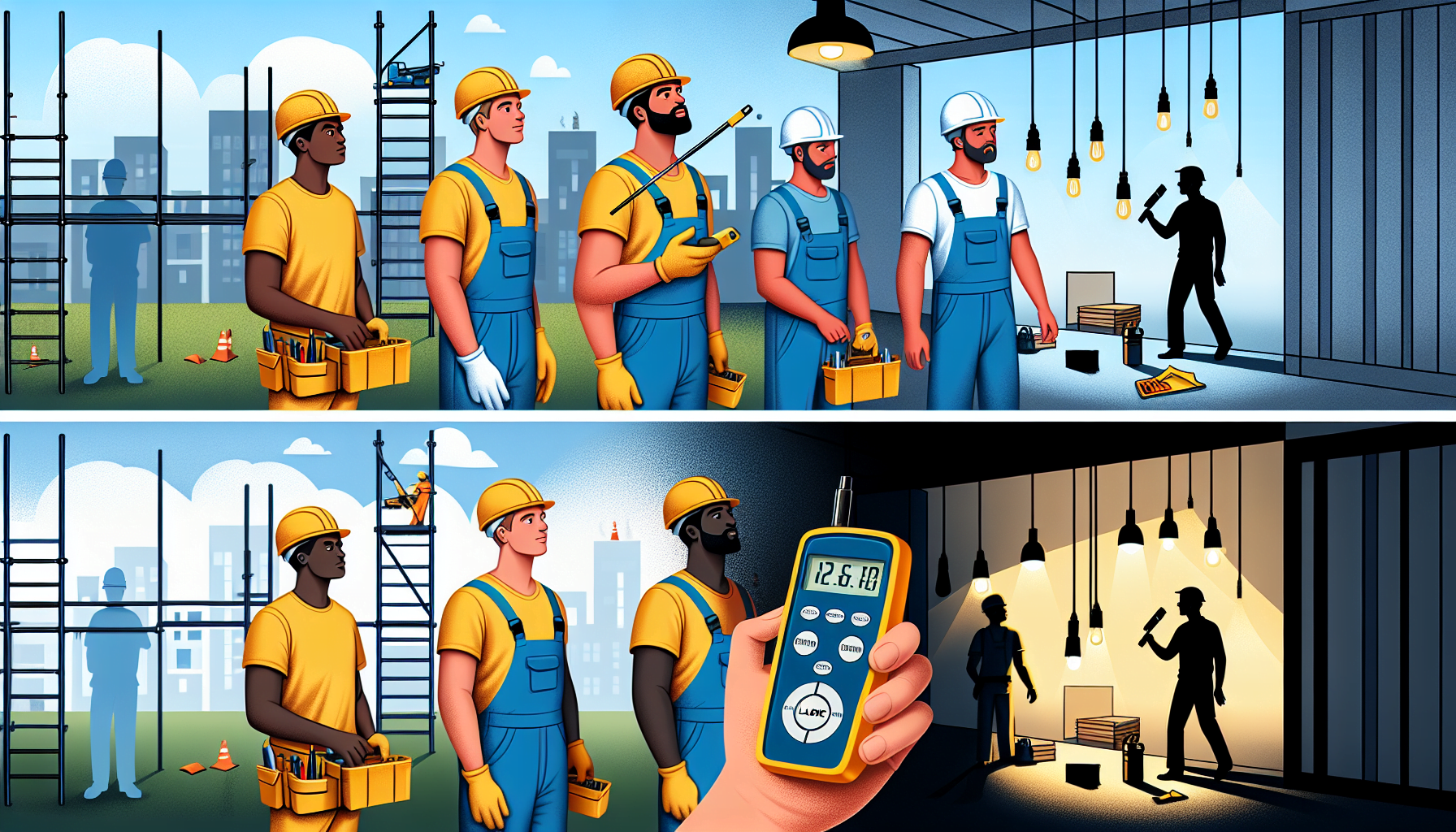Do you want to improve the efficiency and safety of your warehouse operations? One crucial aspect that often goes overlooked is the lighting conditions within your facility. Proper lighting is essential for a safe working environment and can significantly impact productivity and accuracy. In this article, we will explore the importance of good lighting in warehouses and how safety site assessments can help identify and improve lighting conditions.
The Impact of Lighting Conditions on Warehouse Operations
Lighting plays a crucial role in ensuring the overall safety and productivity of warehouse operations. Insufficient or poorly placed lighting can lead to a variety of problems, including:
- Increased risk of accidents and injuries: Inadequate lighting can make it difficult for workers to navigate through the warehouse, increasing the chances of trips, slips, and falls. It can also affect visibility, making it harder to spot potential hazards or obstacles.
- Decreased productivity: Poor lighting can strain workers’ eyes, leading to fatigue and decreased productivity. It can also make it harder to read labels, resulting in slower order picking and packing processes.
- Inaccurate order fulfillment: Dim lighting can make it challenging for workers to identify and verify products, leading to mistakes in order fulfillment and potential customer dissatisfaction.
- Lower employee morale: A poorly lit warehouse can create a gloomy atmosphere, negatively impacting employee morale and overall job satisfaction.
Given these potential issues, it is crucial for warehouse owners and managers to prioritize proper lighting within their facilities.
The Role of Safety Site Assessments
To identify and address any lighting deficiencies in your warehouse, it is recommended to conduct a safety site assessment. A safety site assessment is a comprehensive evaluation of your facility’s safety conditions, including lighting. By conducting a thorough assessment, you can identify areas that require improvement and take the necessary steps to enhance lighting conditions.
During a safety site assessment, a trained professional from HCO Innovations or another warehouse optimization solution provider will evaluate various aspects of your warehouse, including lighting fixtures, placement, and intensity. They will consider factors such as the size of the space, the height of the ceilings, and any specific tasks or areas that require specialized lighting. They will also assess for any potential glare, shadows, or obstructions that may impact visibility.
After the assessment, the professional will provide you with a detailed report highlighting areas that need improvement and recommendations for enhancing your lighting conditions. These recommendations may include:
- Installing additional lighting fixtures in areas with insufficient lighting
- Adjusting the placement and angles of existing fixtures to eliminate shadows
- Replacing outdated or damaged fixtures with more energy-efficient and effective options
- Enhancing lighting in specific task areas such as picking zones or packing stations
- Using LED lighting solutions for superior visibility and energy savings
By following the recommendations provided through safety site assessments, you can significantly improve the lighting conditions in your warehouse and reap the benefits of a safer and more productive working environment.
As a leading provider of warehouse optimization solutions, HCO Innovations offers comprehensive safety site assessments to help you identify and address lighting deficiencies in your facility. Our team of experts has extensive experience in warehouse lighting design and can provide customized recommendations based on your specific needs. Improve your warehouse lighting conditions today by scheduling a safety site assessment with HCO Innovations.
Click here to learn more about our warehouse safety evaluation services and how we can help optimize your warehouse operations.

